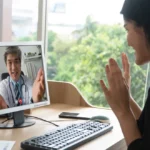Advanced Primary Care Management (APCM) Use Cases in Remote Healthcare

During the last decade, remote healthcare has transitioned from a niche service to an essential component of the global healthcare system. This shift has revealed some of the inherent weaknesses of traditional care models and the necessity for modern day remote care models based on integrated and data-driven principles such as Advanced Primary Care Management (APCM).
Advanced Primary Care Management promotes a strategic and much-needed evolution in healthcare by ensuring holistic and patient-centered care to improve patient outcomes, enhance engagement, and eliminate unnecessary healthcare costs. In the realm of remote healthcare, APCM is of greater importance as it creates a continuum between in-person visits and ongoing, proactive health management.
This blog discusses the use cases of APCM in remote healthcare settings to illustrate its efficacy and how it impacts patient outcomes and streamline clinical workflows.
Table of Contents
ToggleWhat is Advanced Primary Care Management?
Advanced Primary Care Management or APCM is the newest care management program launched by CMS. It is a thoughtful and systematic approach to delivering primary care that emphasizes:
- Proactive chronic disease management
- Personalized care planning
- Team-based, collaborative care
- Technology-driven engagement
- Value-based patient outcomes
With APCM, providers use patient data, digital tools, and coordinated workflows to deliver continuous preventive care that is personalized to fit the needs of patients, especially for those living in remote/underserved areas.
Use Case 1: Chronic care management
Patients who live with chronic illness (e.g., diabetes, hypertension, COPD, heart disease) need to be monitored consistently with frequent modifications in the treatment plans. Unlike traditional care, remote APCM provides continuous care by enabling:
- Remote Patient Monitoring (RPM): Patients use connected devices (e.g., glucometers, blood pressure cuffs, etc.) to collect medical data (e.g., vital signs) from home that are sent in real time to healthcare providers.
- Automated alerts: Care teams receive alerts when readings are outside of “safe” parameters or clinically defined thresholds. Alerts enable the care team to intervene in a timely manner.
- Care coordination: Healthcare providers, pharmacists and specialists can collaborate virtually to adjust treatment plans, patient education, and medication adherence.
Example: A patient who had uncontrolled diabetes may have only be visiting their doctor every 3-4 months. With integrated APCM and RPM, the same patient receives daily feedback, once a month virtual consultation, and adjustments to their care plan in real time. The patient has better HbA1c levels and need fewer ER visits.
Use Case 2: Behavioral Health Integration in Remote Environments
Mental health is a vital part of primary care, but is often overlooked. In the APCM model, Behavioral Health Integration (BHI) is easy to implement, even remotely.
- Screenings and health assessments: Patients complete standardized mental health assessments in advance of or during virtual visits, just like they do with most screening processes.
- Mental health professionals are involved: Psychologists or other counselors work with primary care providers by executing care plans.
- Continuous engagement: Patients participate in Cognitive Behavioral Therapy (CBT), medication management, and other forms of behavioral health support or counseling from home.
Example: A 65-year-old patient living in rural America with anxiety and hypertension meets with a mental health therapist regularly via video calls, receives daily reminders for meditation, has team-based check-ins regarding medication, and manages his treatment plan, all with the help of APCM.
Use Case 3: Post-Acute and Transitional Care Management
The time period after a hospital discharge is quite risky and crucial in a patient’s transition from hospital to home or to a community setting. Any miscommunication, medication errors, follow-up and care coordination failures, may lead to readmission. APCM is ideal for managing challenges that may occur during transitions, especially in remote care settings.
- Remote post-discharge check-ins: A nurse or care coordinator conducts follow-up visits via phone or video call within 48 hours.
- Medication adherence: A pharmacist ensures the patients understand and are following their new medications.
- Digital care plans: Patients receive individualized follow-up care instructions and appointment reminders through a patient-centered mobile app.
For example, following the discharge of a heart failure patient from a hospital, the patient is given a care kit which includes a connected scale and blood pressure monitor. A nurse practitioner connects with the patient remotely once a week and a care giver confirms that the patient has scheduled their next appointment. The risk of readmission for this patient drops significantly.
Use Case 4: Remote Preventive Care and Risk Stratification
Advanced Primary Care Management is not just about managing illness; it is also about the prevention of illness. In a remote healthcare setting, this means recognizing patients that are at risk and reaching them before their health deteriorates.
- Predictive analytics: AI models flag patients for potential chronic disease or intervention based on long term health data trends.
- Preventive screenings: Digital alerts and reminders notify the patients to complete their screenings, labs tests and vaccinations.
- Health coaching: Patients also benefit from personal lifestyle coaching, either during virtual visits or via secure messaging.
Example: A patient with a high BMI and pre-diabetes is flagged by predictive analytics engine. A health coach begins a virtual nutrition and fitness program for 12 weeks. The patient has lost 10 pounds and has better glucose levels. The most important part is the delayed progression to Type 2 diabetes.
Use Case 5: Remote Care for Seniors and Homebound Patients
Seniors and homebound patients face many challenges in accessing care, but APCM can greatly improve quality of life in seniors.
- Virtual primary care: Seniors are engaged with physicians, nurses, and specialists to receive care from home.
- Remote family engagement: Care teams engage with family members and caregivers via care collaboration and shared care platforms.
- Fall detection and monitoring: Wearable sensors and monitoring devices report emergencies to care teams in real time.
Example: An elderly woman aged 82 years lives by herself. She is monitored through wearable sensors and has monthly remote check-ins. Her care team checks in and shares the health data with her daughter who lives in another city as part of her care plan and ongoing monitoring.
The Benefits of APCM in Remote Care Delivery Model
The incorporation of APCM into remote care provides considerable benefits:
- Increased access to care for rural, elderly, and underserved populations
- Enhanced clinical outcomes with better engagement and early intervention
- Increased patient satisfaction with convenience and sense of empowerment
- Reduced healthcare costs based on fewer visits to the ER and hospitalizations
- Increased provider efficiency and satisfaction based on improved workflows
How HealthArc Enables Advanced Primary Care Management in Remote Care
As healthcare continues to evolve away from the four walls of the clinic, providers need a complete and scalable solution to support advanced primary care remotely.
HealthArc is an advanced care management platform, which supports Remote Patient Monitoring (RPM), Chronic Care Management (CCM), Remote Therapeutic Monitoring (RTM), and Transitional Care Management (TCM)—all of which are essential components of any APCM model.
What makes HealthArc stand out is its ability to integrate with existing EHRs and deliver real-time analytics, automated workflows, and customizable patient engagement tools. From generating automated alerts to care teams, managing remote consultations or monitoring chronic conditions via connected devices, HealthArc allows clinicians to deliver smarter, simpler, and efficient care.
Ready to implement APCM? Schedule a demo and find out how HealthArc can help refine your Advanced Primary Care Management goals.
Frequently Asked Questions (FAQs)
The patient receives timely care through APCM by way of real-time monitoring, virtual visits, data analytics, and care coordination.
The commonly managed conditions via APCM include:
- Type 2 Diabetes
- Automated follow-ups triggered by medication changes or missed refills.
- Hypertension
- COPD and asthma
- Heart diseases
- Depression and anxiety
- Obesity
Some benefits for patients include:
- Access to care team round the clock
- Individualized treatment plans
- Less than-average hospital and ER visits
- Better outcomes from continuous monitoring
- Convenience and ease of being monitored at home
Currently, many insurance companies, including Medicare and Medicaid, do cover remote APC services, especially for chronic condition management and preventive care. However, the exact coverage depends on the plan and the state.
A remote APCM care team may include primary care physicians, nurse practitioners, care coordinators, behavioral health professionals, and health coaches connected through digital health platforms.
Most Recent Blogs
Categories
Related Blog
- November 27, 2025 | Read Time: 13 mins
Advanced Primary Care Management (APCM): A Complete Guide for Medicare‑Focused Practices
Advanced primary care management (APCM) is Medicare’s new, population‑based care management framework...
Learn More- October 9, 2025 | Read Time: 45 mins
Advanced Primary Care Management (APCM): What Hospitals and FQHCs Need to Know in 2025
In 2025, the Centers for Medicare & Medicaid Services (CMS) introduced significant...
Learn More- July 19, 2025 | Read Time: 19 mins
Advanced Primary Care Management (APCM): What Providers Need to Know?
Primary care is a thing of the past, often addressed as an...
Learn More


